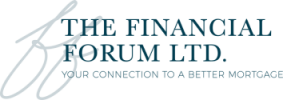The questions comes up in the mind of every home buyer as they are planning to purchase their next home, or at least thinking about it. What type of mortgage do I qualify for? How much of a mortgage would I be able to support? What kind of rate would I be getting? These are the types of questions that are typically addressed at time of pre-approval, but if you are a savvy consumer then you probably like to have an idea of these types of things before speaking to your mortgage broker. We are going to breakdown the simple formula to determine how much of a loan you would be able to qualify for.
First of all, your max purchase price and your max loan amount are two different questions with two different answers.  While one does directly affect the other, your loan amount is obviously the amount of financing that your income is able to support. This is called your debt service ratio. Your purchase price is your loan amount plus whatever down payment you will be putting down. For example, if you are purchasing a home for $400,000 with 20% down or $80,000, your total loan amount would be $320,000. In the event you are putting less than 20% down and require mortgage default insurance (i.e CMHC), then your loan amount would be your purchase price, less your down payment, plus the total insurance premium added on to your mortgage.
While one does directly affect the other, your loan amount is obviously the amount of financing that your income is able to support. This is called your debt service ratio. Your purchase price is your loan amount plus whatever down payment you will be putting down. For example, if you are purchasing a home for $400,000 with 20% down or $80,000, your total loan amount would be $320,000. In the event you are putting less than 20% down and require mortgage default insurance (i.e CMHC), then your loan amount would be your purchase price, less your down payment, plus the total insurance premium added on to your mortgage.
Now on to the nitty gritty. The maximum loan amount you qualify for is determined by using debt service ratios. There are two different kinds of debt service ratios; Total Debt Service (TDS) and Gross Debt Service (GDS). The general rule of thumb for lenders for max TDS/GDS allowed is 44% TDS and 32% GDS for people with credit scores of 680 or higher. This will vary for people with lower scores or other variable. Remember, this is just a general guideline and the numbers can change on a case to case basis. Use this guide to get an idea of what you qualify for, but always speak to your broker about a pre-approval or what you qualify for before making any offers or major decisions.
Gross Debt Service or “GDS” calculates the percentage of your income which will be used for payments pertaining to home ownership. These would be your mortgage payments, property taxes, heating costs and usually 50% of any condo fees. So far example, if your annual income is $60,000 or $5,000/month and your monthly mortgage payments are $1,200 and taxes are $300/month then this would be calculated as such:
($1,200 + $300)/$5,000 = 0.30 OR 30% GDS
Total Debt Service or TDS, takes into consideration your total income against your GDS as well as your current obligations such as credit card payments and car payments. The formula for this is similar to GDS, with your other payments added as well. So take the example above using a monthly income of $5,000, mortgage payment of $1,200, taxes of $300/month, add in a $350/month car payment and a $100/month Line of Credit payment. Your TDS will look like this:
($1,200+$300+$350+$100)/$5,000 = 0.39 OR 39% TDS
The next step in determining the total loan amount you qualify for is to calculate what your mortgage payment would be based on a particular loan amount. This formula takes into consideration compounding interest and amortization, so it is a little bit trickier. Luckily, this is 2016 so you have access to all kinds of mortgage calculators that do the thinking for you. To calculate your mortgage payment, simply visit our calculator, type in your loan amount, interest rate and amortization period. Easy as that.
Note: the max amortization for loans with less than 20% down is 25 years, with 20% or more you can use a 30 year amortization.
Once you have your mortgage payment, simply plug the number into the TDS/GDS formulas we gave you above and see where you’re at. If the number is within 42% TDS and 32% GDS then you are in range. Or you can work backwards by taking your monthly income and calculating 44% and 32% of this. That will give you the maximum monthly payment you would likely qualify for.
When you break it down, it is not too difficult of a process. Again, use this as a guideline to give yourself an idea of the mortgage you would qualify for but when it comes time to go shopping, make sure you speak to your mortgage professional to get an accurate number.





